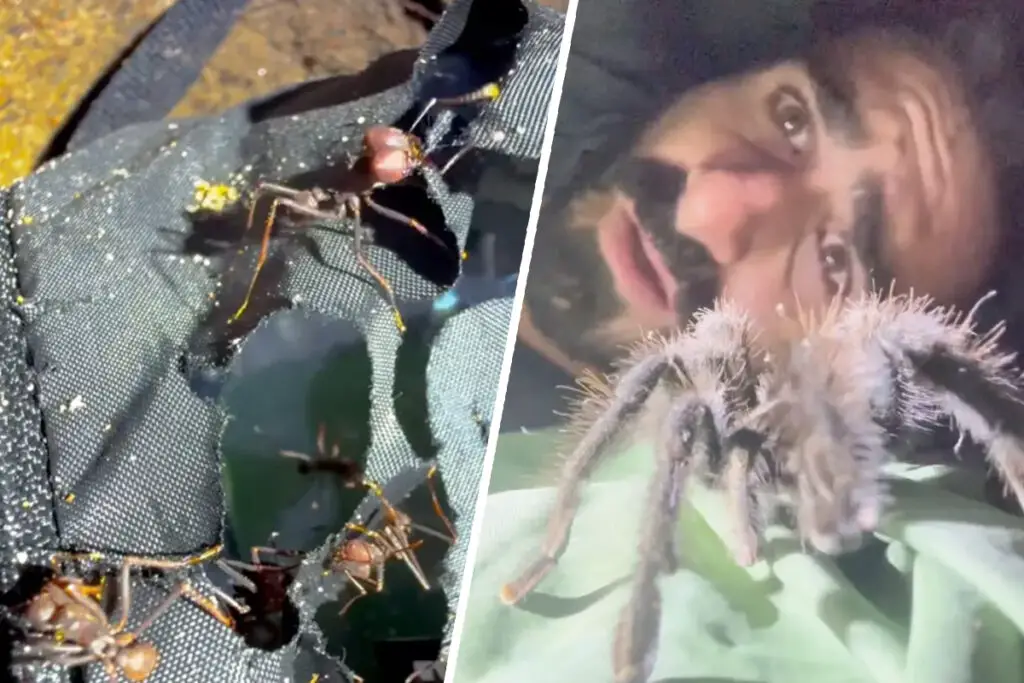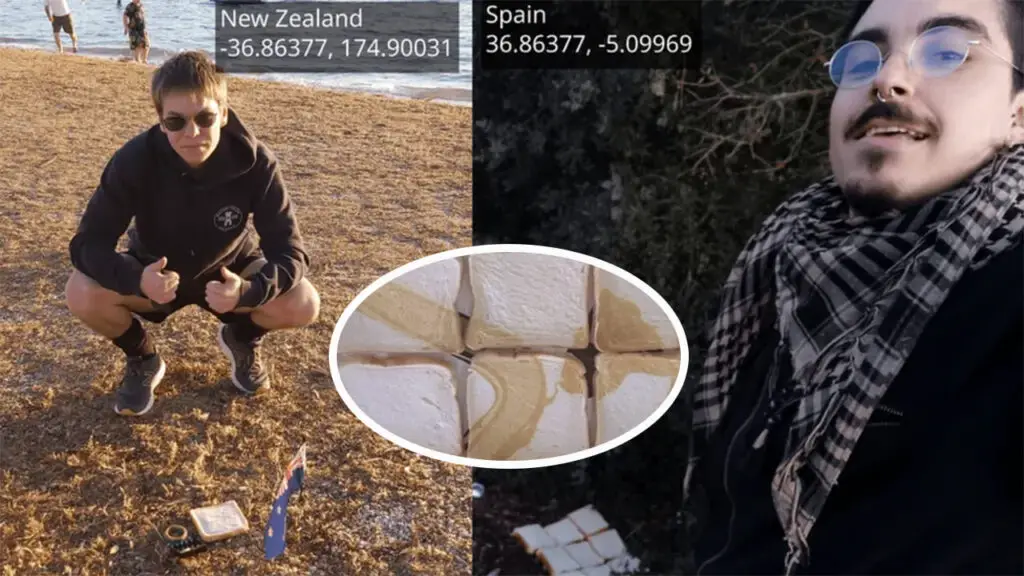2,000-Year-Old Knife Reveals Oldest Runes, Spelling Out ‘Hirila’ – What Ancient Secrets Does It Hold?

- Archaeologists uncovered an iron knife with ancient runes near Odense on Funen island, dating back to around 150 A.D.
- The inscription “hirila,” meaning “little sword” in Proto-Norse, marks Denmark’s earliest known written word.
- This Iron Age artifact predates the famed Jelling stones by 800 years, shedding light on early Scandinavian literacy and Roman influences.
In the quiet burial grounds of Tietgenbyen, just east of Odense on Denmark’s Funen island, an unassuming excavation turned extraordinary when archaeologist Jakob Bonde pulled an ancient iron knife from the earth.
At first glance, the 8-centimeter blade seemed ordinary, its surface encrusted with centuries of rust.
But after careful cleaning by conservators, faint etchings emerged: five characters, each half a centimeter tall, followed by three subtle grooves.

These markings, now identified as runes—the alphabet of Scandinavia’s earliest written language—spell “hirila,” a Proto-Norse term translating to “little sword.”
Bonde, curator at Museum Odense, described the moment of realization with a sense of awe. He had initially dismissed the knife as commonplace among grave goods.
Yet the revelation of its inscription transformed it into a artifact of national importance.
The knife rested beneath the remnants of an urn in a small burial site, accompanied by other items like three fibulae—brooch-like fasteners—that helped date the find to the mid-second century A.D., during the Early Roman Iron Age.
This period saw Scandinavian societies forging ties with the Roman Empire, importing luxury goods and adopting elements of Roman culture to signal prestige.
The word “hirila” likely refers to the knife itself, perhaps as a descriptive name or a mark of craftsmanship, rather than identifying its owner.
Runologists suggest it evokes the blade’s diminutive size, a playful or practical label in an era when such objects held both utility and symbolic value.
Nothing specific is known about the person buried with it, but the grave’s contents point to someone of elevated status.
In Iron Age Denmark, elites often emulated Roman fashions, displaying imported artifacts to assert power and sophistication.
Bonde noted how these individuals “tried to look Roman, so to speak, by importing things and making a Roman display of themselves.”
This discovery stands out in the annals of Danish archaeology for its rarity. Runes, derived from ancient Italic scripts and adapted by Germanic peoples around the first century A.D., represent one of Europe’s oldest writing systems.
Fewer than a handful of artifacts from this early phase survive, making each one a window into linguistic evolution.
The knife’s runes are etched in the Elder Futhark, the oldest form of the runic alphabet, consisting of 24 characters used across Scandinavia until the eighth century.
Linguists trace Proto-Norse as a precursor to Old Norse, the language of Viking sagas, spoken from roughly 200 to 500 A.D. Finding such an inscription intact after nearly two millennia underscores the durability of iron artifacts in acidic soils, where organic materials often perish.
Experts at the National Museum of Denmark have examined the blade, confirming its age through contextual dating rather than direct methods, as the iron’s corrosion precludes radiocarbon analysis.
Lisbeth Imer, a leading runologist, emphasized the inscription’s value for understanding spoken language in the Iron Age.
Proficiency in reading and writing remained confined to a select few, she explained, linking literacy to authority and influence.
This small intellectual elite likely included chieftains, traders, or ritual specialists who wielded runes for practical or magical purposes—perhaps to claim ownership or invoke protection.
The site’s proximity to other historical finds adds layers of intrigue. Less than 10 miles west, in Vimose, a bog yielded a bone comb in 1865 inscribed with “harja,” another Proto-Norse word possibly meaning “comb” or “warrior.”
That comb, now housed at the National Museum, shares a similar age and style, raising questions about regional scribal traditions on Funen.
Could these artifacts indicate a hub of early literacy? Bonde called it spectacular that both oldest runes surfaced within kilometers of each other, though any direct connection remains elusive.
Such coincidences fuel speculation about undiscovered networks of knowledge in pre-Viking Scandinavia.
| Key Fact | Detail |
|---|---|
| Artifact Type | Iron knife blade |
| Length | 8 cm (approximately 3 inches) |
| Inscription | Five runes spelling “hirila,” followed by three grooves |
| Translation | “Little sword” in Proto-Norse |
| Age | Circa 150 A.D., Early Roman Iron Age |
| Discovery Site | Tietgenbyen burial ground, east of Odense, Funen island |
| Discoverer | Jakob Bonde, Museum Odense |
| Associated Artifacts | Three fibulae and urn remnants |
| Historical Period | Iron Age with Roman influences |
| Significance | Oldest runes in Denmark; insights into early literacy and language |
| Display Location | Møntergården Museum, Odense (from February 2, 2024) |
| Comparable Find | 1865 bone comb from Vimose with “harja” inscription |
As excavations continue in Tietgenbyen, archaeologists hope to uncover more clues about the burial’s context.
The grave formed part of a modest cemetery, suggesting a community where status symbols like inscribed weapons played roles in funerary rites.
Roman contacts during this era extended beyond trade; they influenced art, warfare, and even language, as Germanic tribes absorbed Latin loanwords.
Might “hirila” hint at such borrowings, or does it reflect pure native innovation? The knife’s simple form belies its complexity—forged in a time when metallurgy advanced alongside writing, it embodies the fusion of technology and expression.
Bonde reflected on the personal thrill of the find, likening it to receiving a message from antiquity. The blade’s journey from grave to museum involved meticulous conservation, removing corrosion without damaging the delicate etchings.
Now, it joins other Iron Age relics in an exhibition at Møntergården, inviting visitors to ponder its story.
But questions linger: Why inscribe a modest knife? Did runes carry talismanic power, warding off evil or ensuring the owner’s legacy in the afterlife?
Imer pointed out that early runic use often appeared on personal items, from weapons to jewelry, suggesting intimate purposes.
In broader Scandinavian archaeology, similar inscriptions on bracteates—gold medallions—date slightly later, around the fifth century, depicting mythical scenes alongside runes.
Funen’s soil, rich in peat bogs like Vimose, has preserved bog bodies and offerings, offering parallels to the knife’s survival. These wetlands acted as ritual landscapes, where valuables were deposited for gods or ancestors.
The discovery challenges assumptions about Iron Age isolation. Denmark’s position bridged the North Sea and Baltic, facilitating exchanges with Celtic and Germanic groups.
Proto-Norse evolved amid these interactions, incorporating sounds and words that would shape Norwegian, Swedish, and Icelandic.
Linguists debate whether “hirila” derives from Indo-European roots shared with Latin “gladius” or Greek “machaira,” hinting at deeper cultural ties.
As researchers analyze the knife further, perhaps through non-invasive imaging to reveal hidden marks, the artifact promises to rewrite timelines of runic history.
What if more graves nearby hold similar treasures, illuminating forgotten scribes? The “little sword” may be small, but its voice echoes across centuries, urging us to listen for what else lies buried beneath Funen’s fields.
































